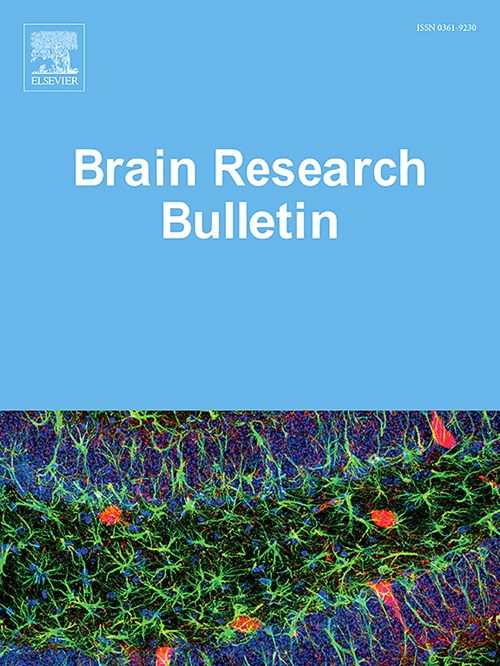探索功能激活和幻觉倾向之间的联系
IF 3.5
3区 医学
Q2 NEUROSCIENCES
引用次数: 0
摘要
幻觉通常与大脑活动的改变有关,特别是在语言相关和感觉处理区域。现有的模型对理解大脑激活和幻觉倾向之间的关系提出了不同的框架,但支持这些模型的实际证据仍然有限。本研究通过功能性磁共振成像(fMRI)研究健康个体幻觉倾向的神经相关因素,包括听觉和视觉处理,包括语音和文本理解、面部识别和视听刺激。参与者主要是大学生,他们在接受功能磁共振成像扫描的同时完成了劳纳-斯莱德幻觉量表修改(LSHS-M)的测量,包括听觉(LSHS-A)和视觉(LSHS-V)的子量表。研究了幻觉倾向得分与任务相关和任务无关区域的大脑激活之间的相关性。尽管在幻觉得分和任务相关区域的激活之间没有发现显著的相关性,但在视觉任务中,语言相关区域出现了正相关,表明任务无关区域的参与增加了。这些结果表明,具有较高幻觉倾向的个体存在抑制缺陷,支持了认知控制能力下降的理论。此外,偏侧化指数与幻觉评分没有显著相关性,这挑战了非临床人群中关于连续统假设的假设。综上所述,这些发现强调了幻觉倾向背后的神经机制的复杂性。虽然这项研究为基于抑制的理论提供了部分支持,但大部分无效的结果强调了对敏感任务、稳健的统计控制和更广泛的人群的需要,以充分阐明幻觉倾向的神经生物学基础。本文章由计算机程序翻译,如有差异,请以英文原文为准。
Exploring the links between functional activation and hallucination proneness
Hallucinations are often associated with alterations in brain activation, particularly in language-related and sensory processing areas. Existing models suggest different frameworks for understanding the relationship between brain activation and hallucination proneness, yet practical evidence supporting these models remains limited. This study investigates the neural correlates of hallucination proneness in healthy individuals through functional MRI (fMRI) tasks focusing on both auditory and visual processing, including voice and text comprehension, face recognition, and audio-visual stimuli. Participants, primarily university students, completed Launay-Slade Hallucination Scale–Modified (LSHS-M) measures, including auditory (LSHS-A) and visual (LSHS-V) subscales, while undergoing fMRI scans. Correlations were examined between hallucination proneness scores and brain activation in task-relevant and task-irrelevant regions. Although no significant correlations were found between hallucination scores and activation in task-relevant areas, positive correlations emerged in language-related regions during visual tasks, suggesting increased engagement in task-irrelevant areas. These results point to an inhibition deficit in individuals with higher hallucination proneness, supporting theories of reduced cognitive control. Furthermore, lateralization indices showed no significant correlation with hallucination scores, challenging assumptions about the continuum hypothesis in non-clinical populations. Taken together, these findings highlight the complexity of the neural mechanisms underlying hallucination proneness. While the study provides partial support for inhibition-based theories, the largely null results highlight the need for sensitive tasks, robust statistical controls, and broader populations to fully elucidate the neurobiological basis of hallucination proneness.
求助全文
通过发布文献求助,成功后即可免费获取论文全文。
去求助
来源期刊

Brain Research Bulletin
医学-神经科学
CiteScore
6.90
自引率
2.60%
发文量
253
审稿时长
67 days
期刊介绍:
The Brain Research Bulletin (BRB) aims to publish novel work that advances our knowledge of molecular and cellular mechanisms that underlie neural network properties associated with behavior, cognition and other brain functions during neurodevelopment and in the adult. Although clinical research is out of the Journal''s scope, the BRB also aims to publish translation research that provides insight into biological mechanisms and processes associated with neurodegeneration mechanisms, neurological diseases and neuropsychiatric disorders. The Journal is especially interested in research using novel methodologies, such as optogenetics, multielectrode array recordings and life imaging in wild-type and genetically-modified animal models, with the goal to advance our understanding of how neurons, glia and networks function in vivo.
 求助内容:
求助内容: 应助结果提醒方式:
应助结果提醒方式:


